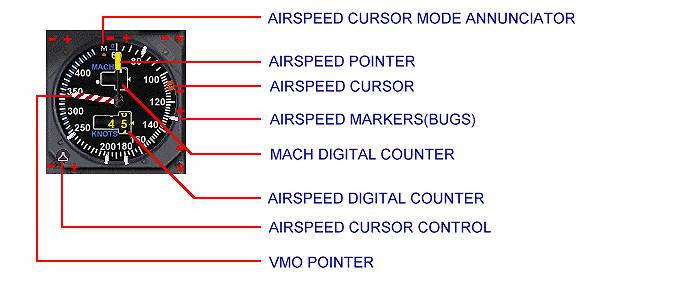It seems like you're a bit puzzled about the overspeed situation in Microsoft Flight Simulator X (FSX). Let's delve into this and hopefully, I can help clear things up for you.
First off, to understand this phenomenon, we need to talk a bit about Indicated Airspeed (IAS) and True Airspeed (TAS). When you climb above 10K ft, the air becomes thinner. Therefore, even though you're flying faster in terms of True Airspeed, your Indicated Airspeed might not show a substantial increase. This discrepancy might be what's causing the overspeed warnings you're experiencing.
Here's a simple analogy: Imagine you're swimming through water, then suddenly the water turns into honey - you would need to put in more effort to maintain the same speed, right? That's essentially what happens when your aircraft climbs above 10K ft - the "medium" it's flying through (air) becomes "thinner", and it needs more power to maintain the same Indicated Airspeed.
The Deal with Overspeed
The overspeed warning is there to prevent structural damage to the aircraft caused by too much aerodynamic stress. In FSX, the overspeed warning is tied to the aircraft's Indicated Airspeed, not its True Airspeed. This means that even if you're flying at an altitude where the air is thin (hence the True Airspeed is high), if the Indicated Airspeed exceeds the aircraft's limitations, the overspeed warning will sound.
How to Disable the Overspeed Warning
Unfortunately, there's no straightforward "switch" in FSX that allows you to turn off the overspeed warning. However, you can lower the volume of your warnings to a more comfortable level. Here's how to do it:
- Go to the Options menu, then select 'Settings'.
- Choose the 'Sound' tab.
- Look for the 'Warnings' slider and adjust it to your desired level.
Remember, overspeed warnings are there for a reason, so try to fly within the aircraft's operational limits. If you consistently fly your aircraft at high speeds, you may want to consider getting a faster jet that can handle those speeds without triggering the overspeed warning.
From my knowledge, the same principles apply to both Microsoft Flight Simulator (2020) and X-Plane 12. So this approach can be used in these platforms as well, given the issue is similar.
I hope this helps! Happy flying!
 Trainee
Trainee 5 Answers
5 Answers
 Jump to latest
Jump to latest
 Chief Captain
Chief Captain
 Captain
Captain
